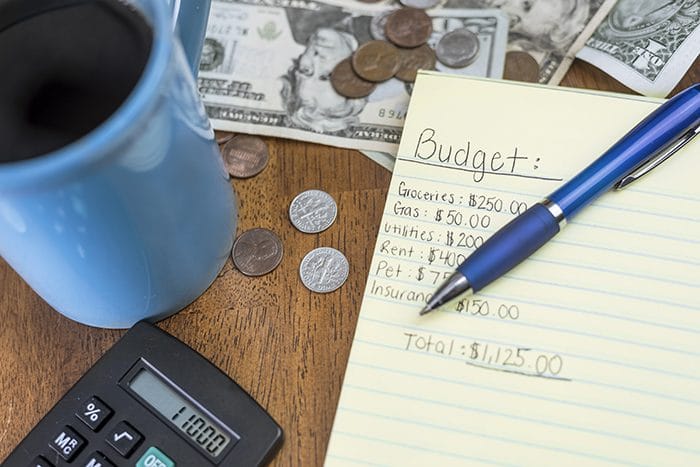How do I create a budget and stick to it?

It’s easy to lose sight of what you’re spending week to week, especially if you’re spending on impulse – “Oh, that $4 frappuccino sounds good right now!” or “Those shoes have to be in my closet. I can’t pass them up.” Budgeting is a great way to stay within your means, make sure you’re covering your necessities and give yourself room to save for your future.
If you find it hard to manage your money or want help staying on top of your finances, talk to one of our bankers. They’re here to offer personal, trustworthy guidance so you can make the most-informed choices about your financial situation. In the meantime, here’s how you build your budget:
Start by going backward. Take the past three months of your bank and credit card statements and add up every expense. Did you make payments in cash that you remember or have a record of? Include those too. Don’t forget to include one-time annual expenses in your calculation (divide by 12 to get a monthly figure). Once you have a total amount, divide by three to figure out what you spend on average monthly. If you pay $1,200 for car insurance annually, for example, you would take $1,200 divided by 12 to get your monthly expense of $100.
You’ll likely be surprised that you dined out as much as you did or how the small purchases you thought were nothing at the time added up to something significant.
Next total your monthly income. This can come from main or side jobs, interest income from investments, tips, child support, etc. Make sure to only include your take-home pay, which is your salary minus any taxes and deductions.
Compare your monthly average income and expense totals. If you spend more than you bring in, you’ll need to either cut your expenses or earn more money. Cutting spending is easier to accomplish. For example, you have to eat, so if you see your grocery bills go up, think about pulling money from your entertainment spending to cover it.
Pay close attention to special occasions and holidays. If they aren’t planned for, they can wreck a budget quickly. Spending money on others makes us feel good, so we often pay less attention to the cost and more on the end result – the smiles, laughter and joy. Create gift-giving lists ahead of time and how much you plan to spend on each person. Be sure to add that to your overall budgeting.
Also, make sure you’re paying down any debt. As part of the budgeting process, you want to encourage habits that convince you to stick to your plan, so tackling the smallest debts first and zeroing them out to get some “wins” can be helpful.
One of the biggest pitfalls in budgeting is being unrealistic with your goals. Habits are hard to change, so it doesn’t make sense to go from dining out seven times a month to zero. Make incremental changes – such as eating out four or five times instead of seven – to alter your spending habits. You don’t have to go “cold turkey” to ensure a noticeable difference.
A budget should be a fluid guide rather than set in stone. It’s unlikely you’re going to keep to any budget perfectly. There will be months where you veer off from any plan, especially when life events occur such as losing a job. A budget, however, keeps you aware of when you’re off track so you can make adjustments when and where you need to.
What if your budget shows money left over at the end of the month after everything’s been paid? You could add the extra to an emergency fund so you’re prepared for those unexpected life hiccups. You could sock it away in a savings account or Individual Retirement Account and continue to add to it every month as you stick to your budget.
In the end, budgeting is a way to map your financial journey so you can set goals and stick to them.


